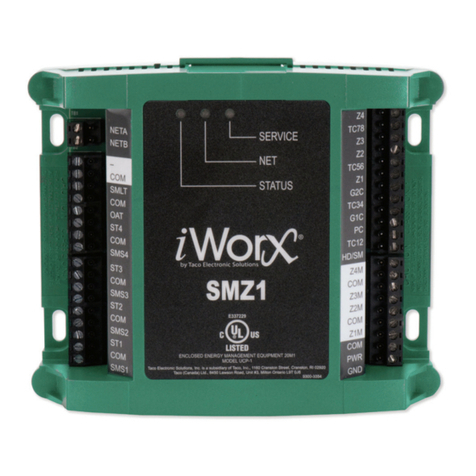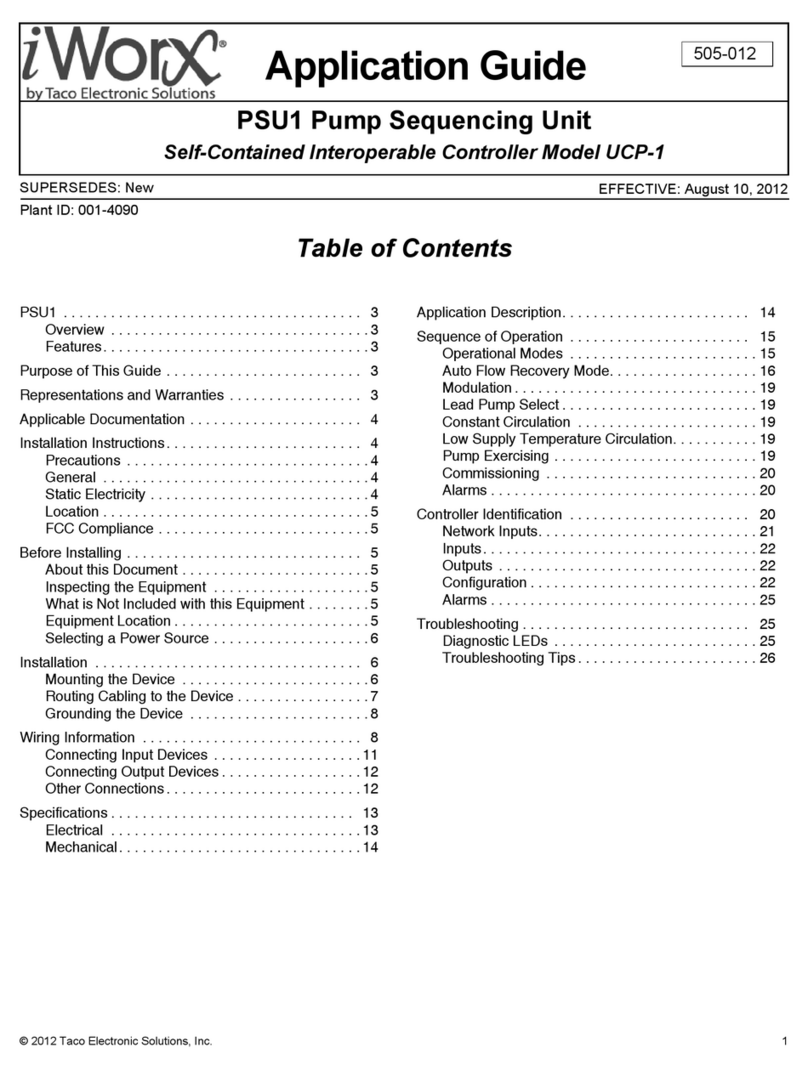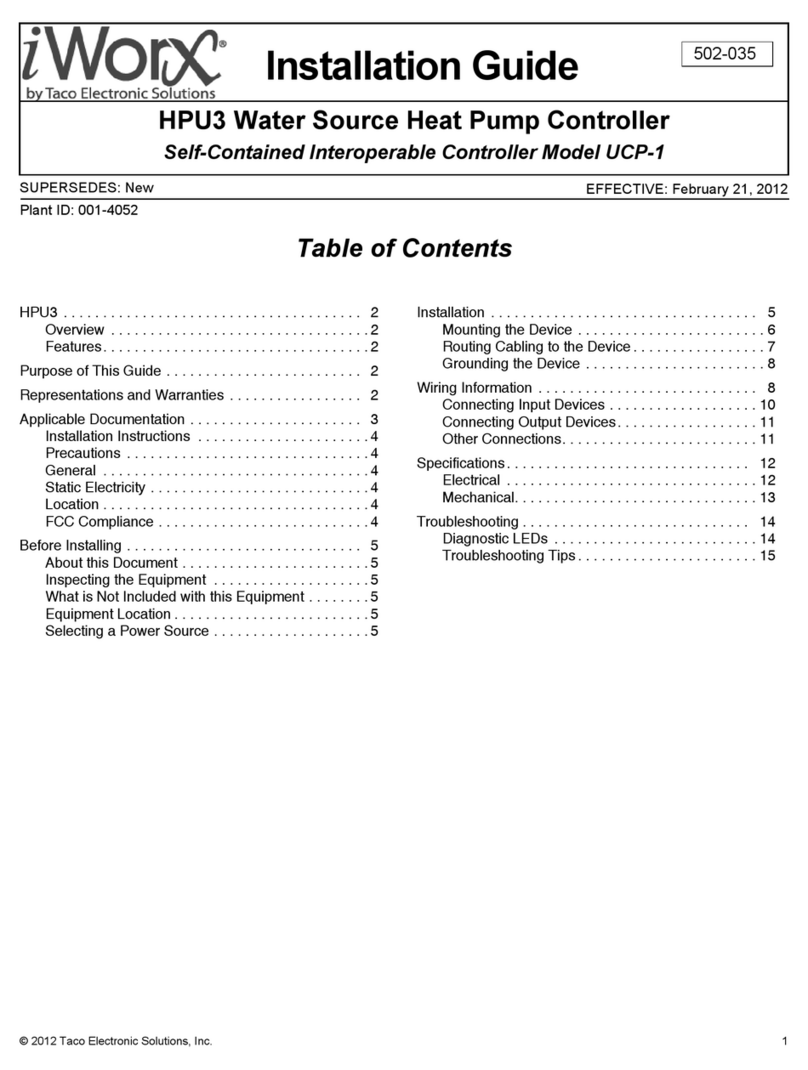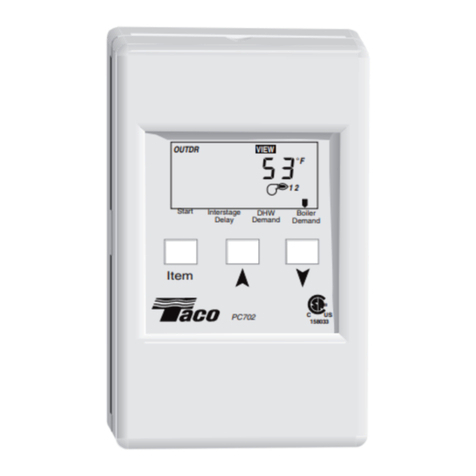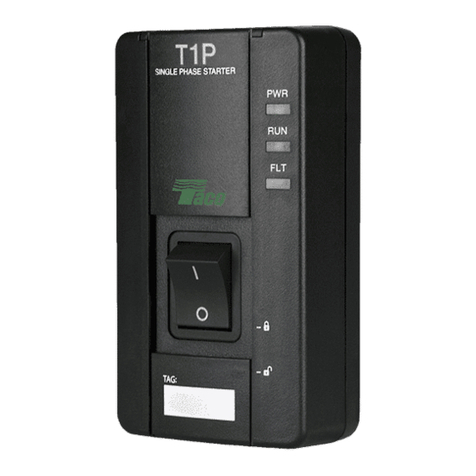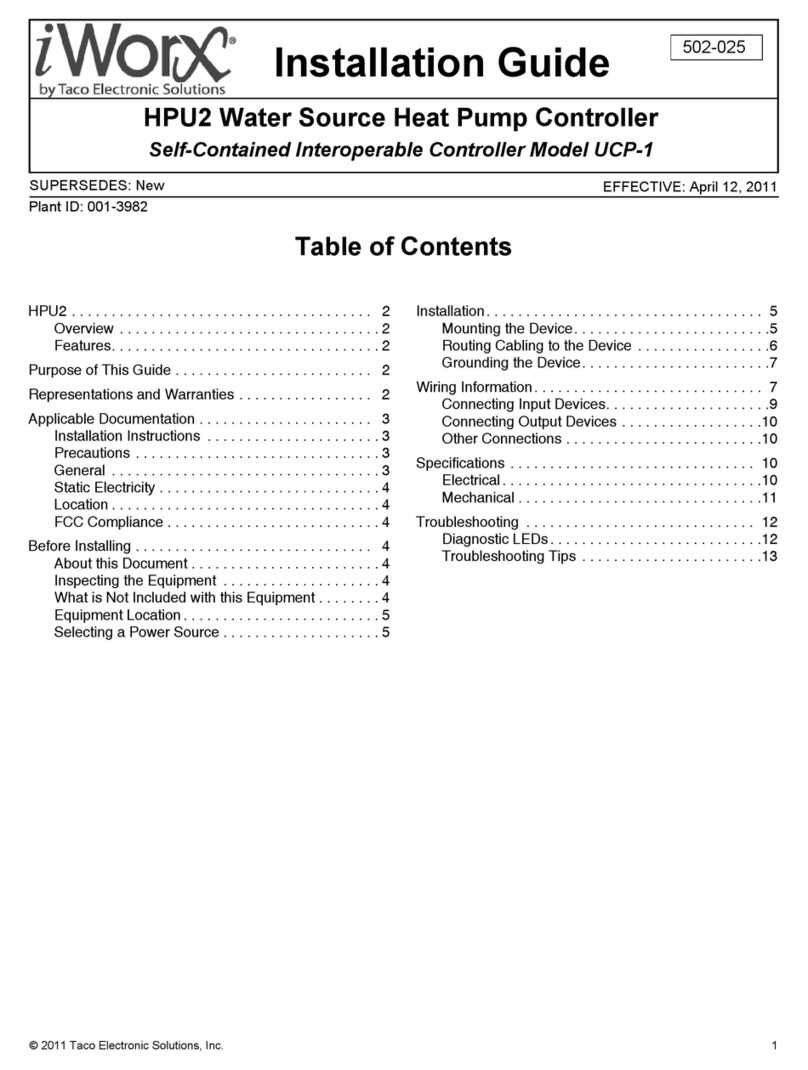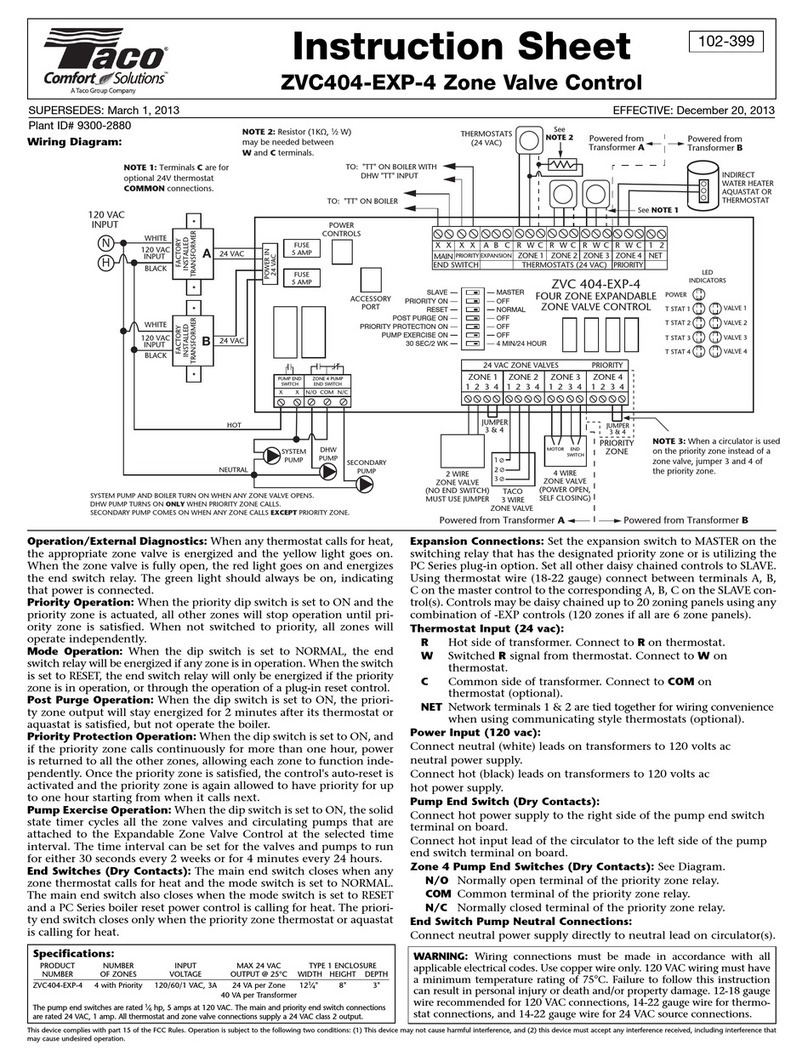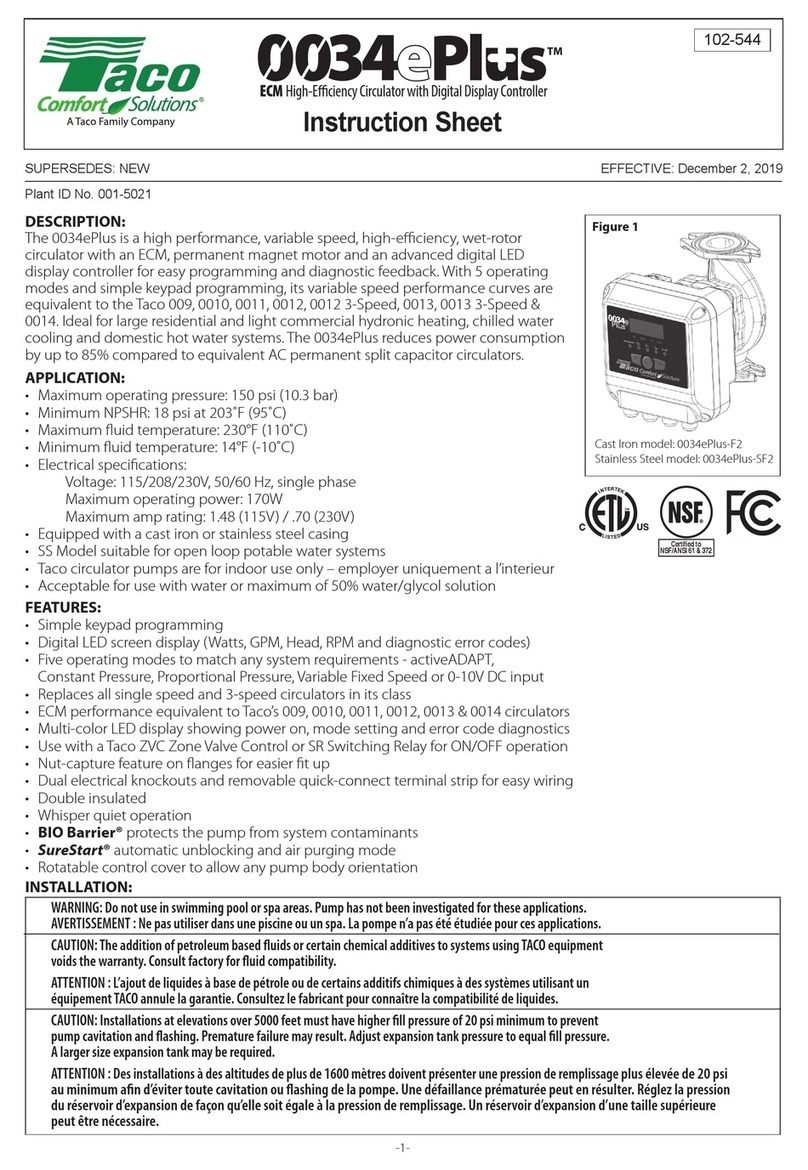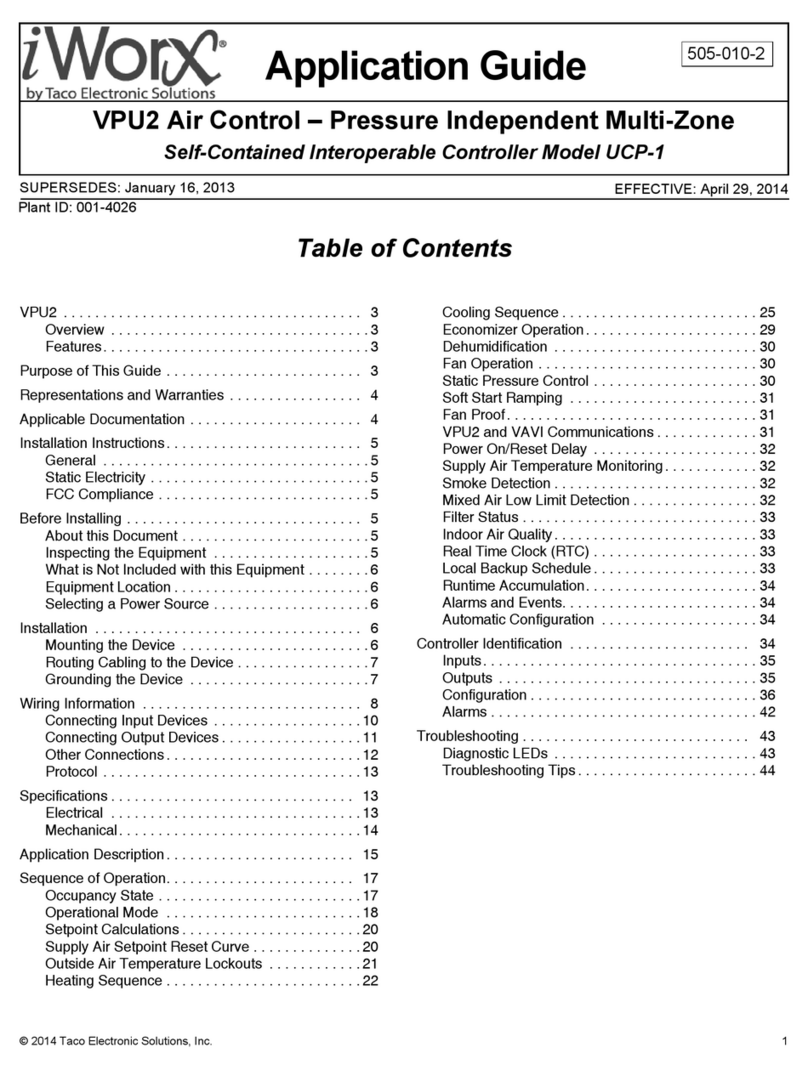
© 2014 Taco Electronic Solutions, Inc. 1
Application Guide 505-009-2
MPU2 Air Control – Pressure Dependent Multi-Zone
Self-Contained Interoperable Controller Model UCP-1
SUPERSEDES: January 16, 2013 EFFECTIVE: April 28, 2014
Table of Contents
MPU2 . . . . . . . . . . . . . . . . . . . . . . . . . . . . . . . . . . . . . . 3
Overview . . . . . . . . . . . . . . . . . . . . . . . . . . . . . . . . . 3
Features. . . . . . . . . . . . . . . . . . . . . . . . . . . . . . . . . . 3
Purpose of This Guide . . . . . . . . . . . . . . . . . . . . . . . . . 3
Representations and Warranties . . . . . . . . . . . . . . . . . 4
Applicable Documentation . . . . . . . . . . . . . . . . . . . . . . 4
Installation Instructions . . . . . . . . . . . . . . . . . . . . . . . . . 5
General . . . . . . . . . . . . . . . . . . . . . . . . . . . . . . . . . . 5
Static Electricity . . . . . . . . . . . . . . . . . . . . . . . . . . . . 5
FCC Compliance . . . . . . . . . . . . . . . . . . . . . . . . . . . 5
Before Installing . . . . . . . . . . . . . . . . . . . . . . . . . . . . . . 5
About this Document . . . . . . . . . . . . . . . . . . . . . . . . 5
Inspecting the Equipment . . . . . . . . . . . . . . . . . . . . 5
What is Not Included with this Equipment . . . . . . . . 6
Equipment Location . . . . . . . . . . . . . . . . . . . . . . . . . 6
Selecting a Power Source . . . . . . . . . . . . . . . . . . . . 6
Installation . . . . . . . . . . . . . . . . . . . . . . . . . . . . . . . . . . 6
Mounting the Device . . . . . . . . . . . . . . . . . . . . . . . . 6
Routing Cabling to the Device . . . . . . . . . . . . . . . . . 7
Grounding the Device . . . . . . . . . . . . . . . . . . . . . . . 7
Wiring Information . . . . . . . . . . . . . . . . . . . . . . . . . . . . 8
Connecting Input Devices . . . . . . . . . . . . . . . . . . . 10
Connecting Output Devices . . . . . . . . . . . . . . . . . . 11
Other Connections . . . . . . . . . . . . . . . . . . . . . . . . . 12
Specifications . . . . . . . . . . . . . . . . . . . . . . . . . . . . . . . 13
Electrical . . . . . . . . . . . . . . . . . . . . . . . . . . . . . . . . 13
Mechanical. . . . . . . . . . . . . . . . . . . . . . . . . . . . . . . 14
Application Description . . . . . . . . . . . . . . . . . . . . . . . . 15
Sequence of Operation. . . . . . . . . . . . . . . . . . . . . . . . 18
Operational Mode . . . . . . . . . . . . . . . . . . . . . . . . . 18
Occupancy Mode . . . . . . . . . . . . . . . . . . . . . . . . . . 19
Setpoint Calculations . . . . . . . . . . . . . . . . . . . . . . . 19
Supply Air Setpoint Reset Curve . . . . . . . . . . . . . . 19
Heating Sequence . . . . . . . . . . . . . . . . . . . . . . . . . 20
Cooling Sequence . . . . . . . . . . . . . . . . . . . . . . . . . 24
Economizer Operation. . . . . . . . . . . . . . . . . . . . . . 27
Cutoff Temperatures . . . . . . . . . . . . . . . . . . . . . . . 28
Dehumidification . . . . . . . . . . . . . . . . . . . . . . . . . . 29
Bypass Damper . . . . . . . . . . . . . . . . . . . . . . . . . . . 29
Analog Outputs . . . . . . . . . . . . . . . . . . . . . . . . . . . 29
Fan Operation . . . . . . . . . . . . . . . . . . . . . . . . . . . . 29
Fan Proof. . . . . . . . . . . . . . . . . . . . . . . . . . . . . . . . 30
MPU2 and VAVD Communications . . . . . . . . . . . . 30
Associating VAVDs . . . . . . . . . . . . . . . . . . . . . . . . 30
Supply Air Temperature Monitoring . . . . . . . . . . . . 30
Indoor Air Quality. . . . . . . . . . . . . . . . . . . . . . . . . . 31
Smoke Detection . . . . . . . . . . . . . . . . . . . . . . . . . . 31
Mixed Air Low Limit Detection . . . . . . . . . . . . . . . . 31
Filter Status . . . . . . . . . . . . . . . . . . . . . . . . . . . . . . 32
Real Time Clock (RTC) . . . . . . . . . . . . . . . . . . . . . 32
Local Backup Schedule . . . . . . . . . . . . . . . . . . . . . 32
Runtime Accumulations. . . . . . . . . . . . . . . . . . . . . 32
Alarms and Events. . . . . . . . . . . . . . . . . . . . . . . . . 32
Automatic Configuration . . . . . . . . . . . . . . . . . . . . 33
Controller Identification . . . . . . . . . . . . . . . . . . . . . . . 33
Inputs. . . . . . . . . . . . . . . . . . . . . . . . . . . . . . . . . . . 33
Outputs . . . . . . . . . . . . . . . . . . . . . . . . . . . . . . . . . 34
Configuration . . . . . . . . . . . . . . . . . . . . . . . . . . . . . 34
Alarms . . . . . . . . . . . . . . . . . . . . . . . . . . . . . . . . . . 40
Troubleshooting . . . . . . . . . . . . . . . . . . . . . . . . . . . . . 41
Diagnostic LEDs . . . . . . . . . . . . . . . . . . . . . . . . . . 41
Troubleshooting Tips . . . . . . . . . . . . . . . . . . . . . . . 42
